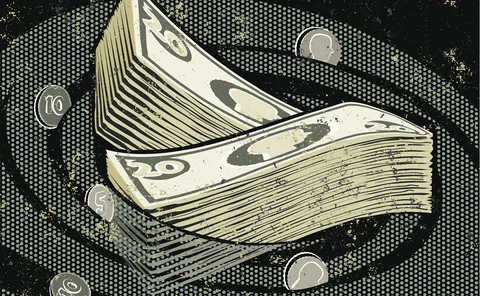Recovery rates
Creaky credit sparks ‘high’ dispersion in CLO pricing
Investors are becoming more particular when it comes to tranches and managers
Banks in EU periphery lose most on soured loans
Irish, Spanish, Italian banks also have to wait longest to recover loaned funds to borrowers in default
Covid-19 and the credit cycle
The Covid-19 health crisis has dramatically affected just about every aspect of the economy, including the transition from a record long benign credit cycle to a stressed one, with still uncertain dimensions. This paper seeks to assess the credit climate…
An internal default risk model: simulation of default times and recovery rates within the new Fundamental Review of the Trading Book framework
This paper presents a new default risk model for market risk that is consistent with these requirements. The recovery rates follow a waterfall model that is based on a minimum entropy principle.
CLO stress test shows losses for US insurers could top $6.9bn
Under one stress scenario, BBB tranches could suffer losses
Podcast: Kenyon and Berrahoui on the pitfalls of PFE
Quants propose replacement to existing credit risk measure
Does credit risk need an expected shortfall-style revamp?
Quants propose tail risk-sensitive measure for counterparty credit risk
If CLO investors flee, defaults could snowball
High yield borrowers relying on a steady stream of leveraged loan issuance that could quickly run dry
CLO scare: could rated tranches see losses?
Structures are more solid, but loans are dicier, and recovery rates may be disintegrating
A credit portfolio framework under dependent risk parameters: probability of default, loss given default and exposure at default
This paper introduces a credit portfolio framework that allows for dependencies between default probabilities, secured and unsecured recovery rates and exposures at default (EADs).
CDSs, CVA and DVA – a structural approach
CDSs, CVA and DVA – a structural approach
DVA for assets
DVA for assets
Risky funding with counterparty and liquidity charges
Risky funding with counterparty and liquidity charges
Name concentration correction
Credit Risk
Name concentration correction
Name concentration correction
Pricing distressed CDOs with base correlation and stochastic recovery rates
In 2008 and 2009, the calibration of the standard Gaussian copula model for collateralised debt obligations has frequently broken down. To overcome that problem, Martin Krekel has embedded the model with correlated stochastic recovery rates. He shows…
A bottom-up model with top-down dynamics
Yadong Li proposes a flexible, tractable and arbitrage-free bottom-up dynamic correlation modelling framework with a consistent stochastic recovery specification for multi-name credit derivatives. In this framework, the model’s spread dynamics can be…
Individual names in top-down CDO pricing models
The Gaussian copula collapsed as a means of pricing collateralised debt obligations in the crisis of 2008, as to match prices and deltas nonsensical correlation parameters were required. By adapting the traditional framework to cater for more general…
Default and recovery correlations - a dynamic econometric approach
Integrating coherences between defaults and loss given default (LGD) is postulated by Basel II. If there is a positive correlation between the two, separate models for each lead to biased estimates for the LGD parameters, and the economic loss is…












